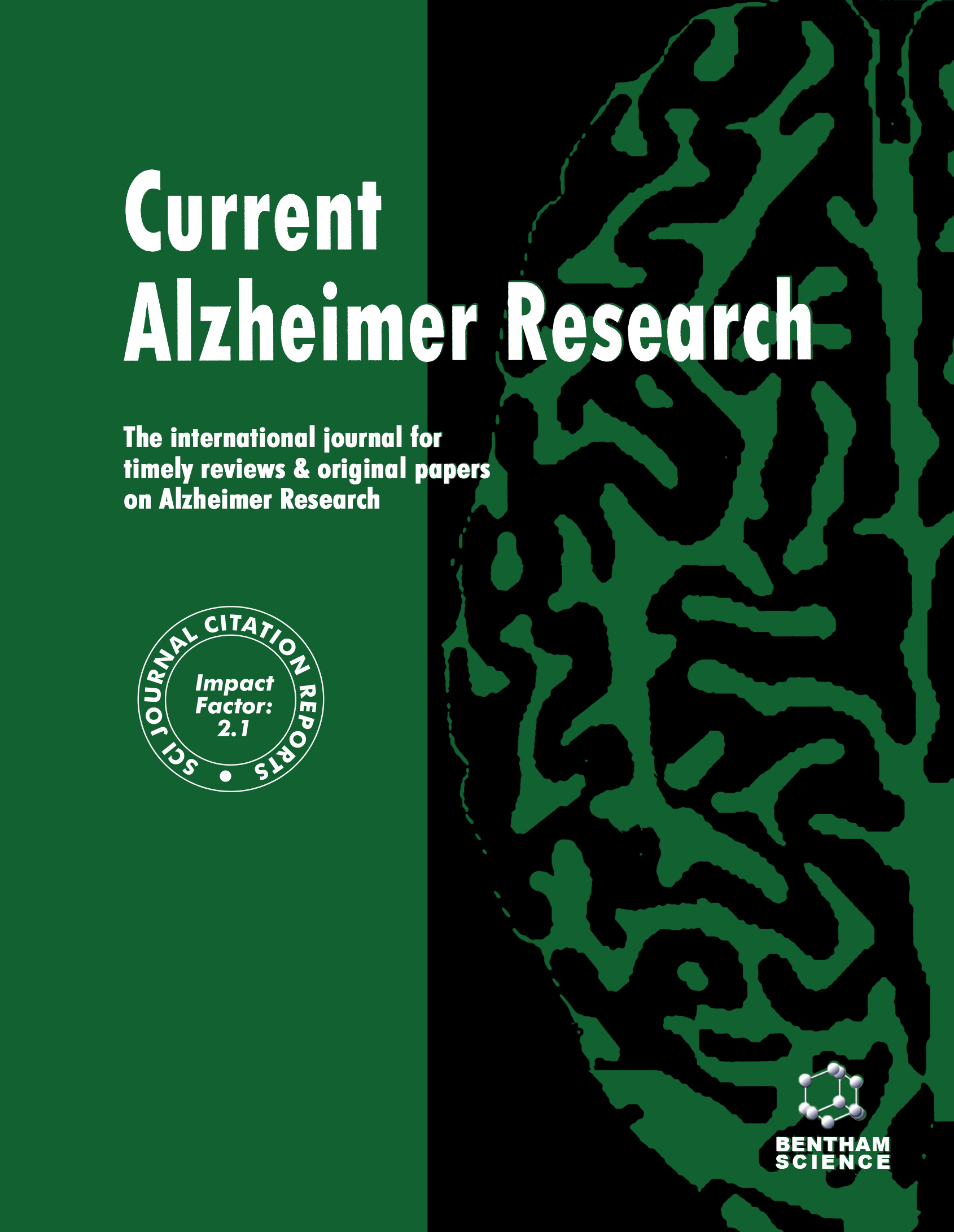- Home
- A-Z Publications
- Current Alzheimer Research
- Previous Issues
- Volume 17, Issue 8, 2020
Current Alzheimer Research - Volume 17, Issue 8, 2020
Volume 17, Issue 8, 2020
-
-
Research Progress on circRNA in Nervous System Diseases
More LessCircular RNAs (circRNAs) are a kind of non-coding RNA molecule with highly stable circular structures. CircRNAs are primarily composed of exons and/or introns. Recently, a lot of exciting studies showed that circRNA played an essential role in the development of nervous system diseases. Here, classification, characteristics, biogenesis, and the association of circRNA dysregulation with nervous system diseases, such as Alzh Read More
-
-
-
PET-Amyloid After Inconclusive Cerebrospinal Fluid Biomarkers in Clinical Practice. Is it Necessary to Duplicate Procedures?
More LessIntroduction: In the absence of a gold standard for in vivo Alzheimer disease (AD) diagnosis, AD biomarkers such as cerebrospinal fluid biomarkers (CSF-B) and PET-Amyloid are considered diagnostically useful in clinical practice guidelines and have consensual appropriate use criteria (AUC). However, little evidence has been published on their utilization in the clinical setting or on approaches to mismatched results. The object Read More
-
-
-
Cerebrospinal Fluid and Blood CX3CL1 as a Potential Biomarker in Early Diagnosis and Prognosis of Dementia
More LessBackground: A growing body of evidence highlights the crucial role of neuroinflammation and chemokine involvement in cognitive impairment pathophysiology. Fractalkine (CX3CL1) appears to be a relevant causative factor in the development of dementia, particularly at the early stages of the disease. However, limited data are available on the levels of CX3CL1 in the cerebrospinal fluid (CSF) and blood. Additionally, to date, Read More
-
-
-
Targeting Pathological Amyloid Aggregates with Conformation-Sensitive Antibodies
More LessAuthors: Alessandra Bigi, Gilda Loffredo, Roberta Cascella and Cristina CecchiBackground: The pathogenesis of Alzheimer's disease (AD) is not directly caused by the presence of senile plaques but rather by the detrimental effects exerted on neuronal cells by toxic soluble oligomers. Such species are formed early during the aggregation process of the Aβ1-42 peptide or can be released from mature fibrils. Nowadays, efficient tools for an early diagnosis, as well as pharmaceutical treatments targeting t Read More
-
-
-
Curcumin Prevents Neuroinflammation by Inducing Microglia to Transform into the M2-phenotype via CaMKKβ-dependent Activation of the AMP-Activated Protein Kinase Signal Pathway
More LessAuthors: Peifeng Qiao, Jingxi Ma, Yangyang Wang, Zhenting Huang, Qian Zou, Zhiyou Cai and Yong TangBackground: Neuroinflammation plays an important role in the pathophysiological process of various neurodegenerative diseases. It is well known that curcumin has obvious anti-inflammatory effects in various neuroinflammation models. However, its effect on the modulation of microglial polarization is largely unknown. Objective: This study aimed to investigate whether curcumin changed microglia to an anti-inflammatory Read More
-
-
-
A Urinary Metabolomics Analysis Based on UPLC-MS and Effects of Moxibustion in APP/PS1 Mice
More LessAuthors: Rui He, Juntian Liu, Chang Huang, Jinyi Liu, Herong Cui and Baixiao ZhaoObjective: Alzheimer's disease (AD) is a common neurodegenerative disorder with the symptoms of cognitive impairment and decreased learning and memory abilities. Metabolomics can reflect the related functional status and physiological and pathological changes in the process of AD. Moxibustion is a unique method in traditional Chinese medicine, which has been used in the treatment and prevention of diseases for th Read More
-
-
-
APOE Genotypes and Brain Imaging Classes in Normal Cognition, Mild Cognitive Impairment, and Alzheimer's Disease: A Longitudinal Study
More LessObjective: To evaluate in 419 stroke-free cognitively normal subjects (CN) aged 45-82 years covering during a long prospective study (11.54 ± 1.47 years) the preclinical to dementia spectrum: 1) the distribution of small vessel disease (V) and brain atrophy (A) aggregated as following: V−/A−, V−/A+, V+/A−, V+/A+; 2) the relationship of these imaging classes with individual apolipoprotein E (APOE) genotypes; 3) the risk of prog Read More
-
Volumes & issues
-
Volume 21 (2024)
-
Volume 20 (2023)
-
Volume 19 (2022)
-
Volume 18 (2021)
-
Volume 17 (2020)
-
Volume 16 (2019)
-
Volume 15 (2018)
-
Volume 14 (2017)
-
Volume 13 (2016)
-
Volume 12 (2015)
-
Volume 11 (2014)
-
Volume 10 (2013)
-
Volume 9 (2012)
-
Volume 8 (2011)
-
Volume 7 (2010)
-
Volume 6 (2009)
-
Volume 5 (2008)
-
Volume 4 (2007)
-
Volume 3 (2006)
-
Volume 2 (2005)
-
Volume 1 (2004)
Most Read This Month
Article
content/journals/car
Journal
10
5
false
en

Most Cited Most Cited RSS feed
-
-
Cognitive Reserve in Aging
Authors: A. M. Tucker and Y. Stern
-
- More Less

